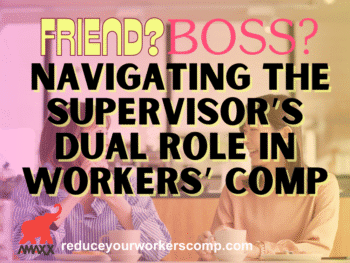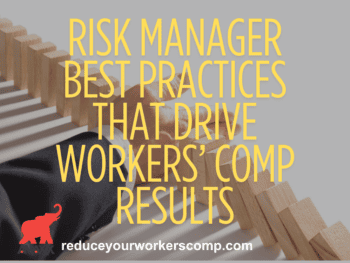Every day employers can introduce increased risk for worker injury. At any given time, outside or internal forces can create a new hazard for injury. With the injury comes medical cost, lost wages, decreased production, decreased profit margins, more strain on current workforce, and other negative issues.
Below we will discuss a few factors involved in the increased risk of worker injury and the way to decrease the hazard when these forces are present in your workplace.
1) New Equipment in the Workplace:
Your workforce has a span of experience that varies by employee. Some workers are new to your industry, whereas others may have decades of experience. But new equipment is a great equalizer.
When there is hazardous equipment on the work floor unknown to your operators, the risk of serious injury increases dramatically. Your workers are unfamiliar with these machines, and, without proper training, a severe injury may occur.
The way to prevent injury is to take the time to properly train each employee on proper use of the new machine. Make sure they complete the training course and can pass a safety test before operating the equipment. This should decrease your risk, and make your workers safe.
Click Link to Access Free PDF Download
A lot of employers ignore training, letting experienced workers train others. Managers can be surprised that older workers typically do not have the advanced technological experience to know these new machines inside and out, and therefore, without a properly trained workforce, you run the risk of increased worker injury.
2) Benefit Reductions:
As the economic environment continues to evolve, employers are scrambling to find ways to stay competitive. Some are experimenting with decreasing fringe benefits made available to employees, or by decreasing the employer contribution which increases employee cost for the same benefits package they may have had for years.
The backlash against this can lead to an increase in workers compensation claims. It is not going to be across the board, but some people may adopt the attitude they want to show the employer what happens when they alter the benefits. This is done by workers who stop caring about their jobs. They do not do safety checks or machine checks before operation. They do not clean up as they used to. They do not work as hard as they once did. The result is other workers injured by someone else’s carelessness.
3) Demotions Within the Company:
Workers who are demoted or moved to another job title may hold a grudge. They become upset and want to sabotage their employer through a lackluster work performance, decreased safety awareness, decreased work productivity, etc. All of these are detrimental to the employer, and another employee may become injured inadvertently by the disgruntled employee’s issue with the employer.
When job titles change, or people get moved around to other job duties, watch for an increase in claims. If this happens, employers should talk to employees immediately. Let them know that these moves are not a personal attack and may not be permanent. You need to make those workers feel like they are part of the team again, so they stay on board and on top of their safety protocol.
FREE DOWNLOAD: “5 Critical Metrics To Measure Workers’ Comp Success”
4) Plant Shutdowns / Layoff Notices:
Probably the most common time a claim count increases is when workers are notified of a potential layoff or worse — an entire plant shut down. Workers with any injury feel if they do not report it now they will miss out. Often any worker who has ever had any pain while working is going to come forward to tell you how injured they are, and how they kept working to try and be of some benefit to the employer and keep earning a paycheck.
Not all of these types of last-minute claims are fraudulent. In fact, some long-term employees may have an occupational claim that is compensable. All claims need to be reported to your workers comp carrier so the adjuster can investigate the claims and get them taken care of, whether they are denied or compensable. Any delay can cause an increase in claim cost, especially if said employee is laid off, or terminated when the shop closes down. The sooner the adjusters get the claims, the better your company will be protected.
In conclusion, several issues can contribute to a spike in an employer’s claims count. But with proper communication, thorough training, and a good safety team you should be able to weather the storm and keep your claims count in check.

Author Michael Stack, CEO Amaxx LLC. He is an expert in workers’ compensation cost containment systems and helps employers reduce their workers’ comp costs by 20% to 50%. He works as a consultant to large and mid-market clients, is a co-author of Your Ultimate Guide To Mastering Workers Comp Costs, a comprehensive step-by-step manual of cost containment strategies based on hands-on field experience, and is founder & lead trainer of Amaxx Workers’ Comp Training Center.
Contact: mstack@reduceyourworkerscomp.com.
Workers’ Comp Roundup Blog: https://blog.reduceyourworkerscomp.com/
©2018 Amaxx LLC. All rights reserved under International Copyright Law.
Do not use this information without independent verification. All state laws vary. You should consult with your insurance broker, attorney, or qualified professional.
FREE DOWNLOAD: “5 Critical Metrics To Measure Workers’ Comp Success”
















